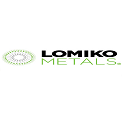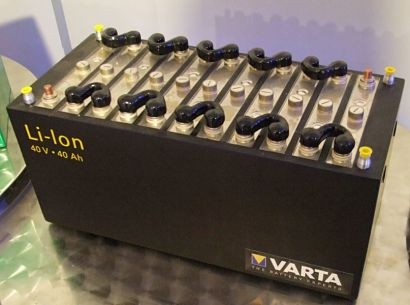Vancouver, B.C., Feb. 05, 2020 (GLOBE NEWSWIRE) — Lomiko Metals Inc. (TSX-V: LMR, OTC: LMRMF, FSE: DH8C) (Lomiko or the “Companyâ€) is
pleased to announce plans to move forward with assessment and
development of the La Loutre Property for 2020. The goals are as
follows:
1) Complete 100% Acquisition of the Property
2) Complete Metallurgy and Graphite Characterization
3) Complete a Technical Report in accordance with NI 43-101 Guidelines
A
“technical report” means a report prepared and filed in accordance with
this Instrument and Form 43-101F1 Technical Report that includes, in
summary form, all material scientific and technical information in
respect of the subject property as of the effective date of the
technical report;
4) Complete Preliminary Economic Assessment (PEA) compliant with NI 43-101 Guidelines
PEA
means a study, other than a pre-feasibility or feasibility study, that
includes an economic analysis of the potential viability of mineral
resources;
Further details regarding the plan will be released when consultants are assigned for each task.
Results from Drilling Program
Results from the 2019 program (see Table 1 below, and Figure 1)
at the Refractory Zone of the La Loutre graphite project (the
“Projectâ€) indicate considerable promise. A total of 21 holes were
completed in 2019 on the Refractory Zone for a total of 2,985 metres.
The Project is owned by Lomiko (80%) and Quebec Precious Metals
Corporation (20%).
“La
Loutre has proven to be a large and high-grade area worthy of further
investment.†stated A. Paul Gill, CEO. “The only operating graphite
mine in North America is the Imerys Graphite & Carbon at
Lac-des-ÃŽles, 53 km northwest of La Loutre which reported Proven
reserves of 5.2 M Tonnes at a grade of 7.42 % Cg in July 1988 before the
start of production.†(reference:
Potentiel de la minéralisation en graphite au Québec, N’Golo Togola,
MERN, page 31, Conférence Québec Mines, November 24 2016).
* mineralization
hosted on adjacent and/or nearby projects is not necessarily indicative
of mineralization hosted on the Company’s property:
Although
the recent focus was on the Refractory Zone, the Project was also
subject of an independent technical report in accordance with NI 43-101
– Standards of Disclosure for Mineral Projects, prepared by B. Turcotte and G. Servelle of InnovExplo Inc. from Val-d’Or, Québec, and O. Peters, of AGP Mining Inc., dated March 24, 2016, filed for the Project’s Graphene-Battery Zone.
The report presented a mineral resource estimate of 18.4 M Tonnes at a
grade of 3.19% carbon flake graphite (“Cgâ€) in the Indicated category
and 16.7 M Tonnes at 3.75% Cg in the Inferred category using a cut-off
of 1.5% Cg.
The
above-noted 2016 mineral resource does not include the current results
or the significant intercepts from the Refractory Zone in 2016 which
were as follows:
LL-16-01 – 7.74% Cg over 135.60 m including 16.81%Cg over 44.10 m
LL-16-02 – 17.08% Cg over 22.30 m and 14.80% Cg over 15.10 m
LL-16-03 – 14.56% Cg over 110.80 m
The
next task is to complete a new resource estimate in compliance with NI
43-101 for the entire Project since the above-mentioned 2016 resource
estimate including the 2016 and 2019 drilling at the Refractory Zone.
Table 1:
Results of the 21 drill holes of the 2019 drill program. The width is
drill indicated core length. Insufficient data exists to determine true
width at this time
On
the basis of the available geophysical and 2016 and 2019 drilling data,
the strike length of the mineralization is estimated at 900 m in the
NW-SE direction and is open in both directions. A detailed
interpretation of the results will be carried out to better estimate the
thickness and strike length of the mineralized zone.
The
Project consists of contiguous claim blocks totaling 29 km2 situated
approximately 53 km SE of the Imerys Carbon and Graphite Lac-des-ÃŽles
mine, formerly known as the Timcal mine, North America’s only operating
graphite mine. It is accessible by driving NW from Montreal for a
distance of approximately 170 kilometres
The
2019 exploration program was managed by Consul-Teck Exploration Minière
Inc. (“Consul- Teckâ€) of Val-d’Or, Quebec, who designed the drilling
campaign, supervised the program and logged and sampled the core.
Quality Assurance/Quality Control
Consul-Teck
implemented QA/QC procedures to ensure best practices in sampling and
analysis of the core samples. The drill core was logged and then split,
with one half sent for assay and the other retained in the core box as a
witness sample. Duplicates and blanks were inserted at a regular
interval into the sample stream.
The
samples in secure tagged bags were delivered directly to the analytical
facility for analysis. In this case, the analytical facility was the
ALS Minerals laboratory facility in Val-d’Or, Quebec. The samples are
weighed and identified prior to sample preparation. The samples are
crushed to 70% minus 2 mm, then separated and pulverized to 85% passing
75µm. All samples are analyzed for Cg using the C-IR18 method.
Qualified Person
Jean-Sébastien
Lavallée (OGQ #773), Geologist, is a shareholder of both companies, VP
Exploration of QPM and a Qualified Person under NI 43-101, has reviewed
and approved the technical content of this release.
For more information on Lomiko Metals, review the website at www.lomiko.com, contact A. Paul Gill at 604-729-5312 or email: [email protected].
On Behalf of the Board,
“A. Paul Gillâ€
Chief Executive Officer









